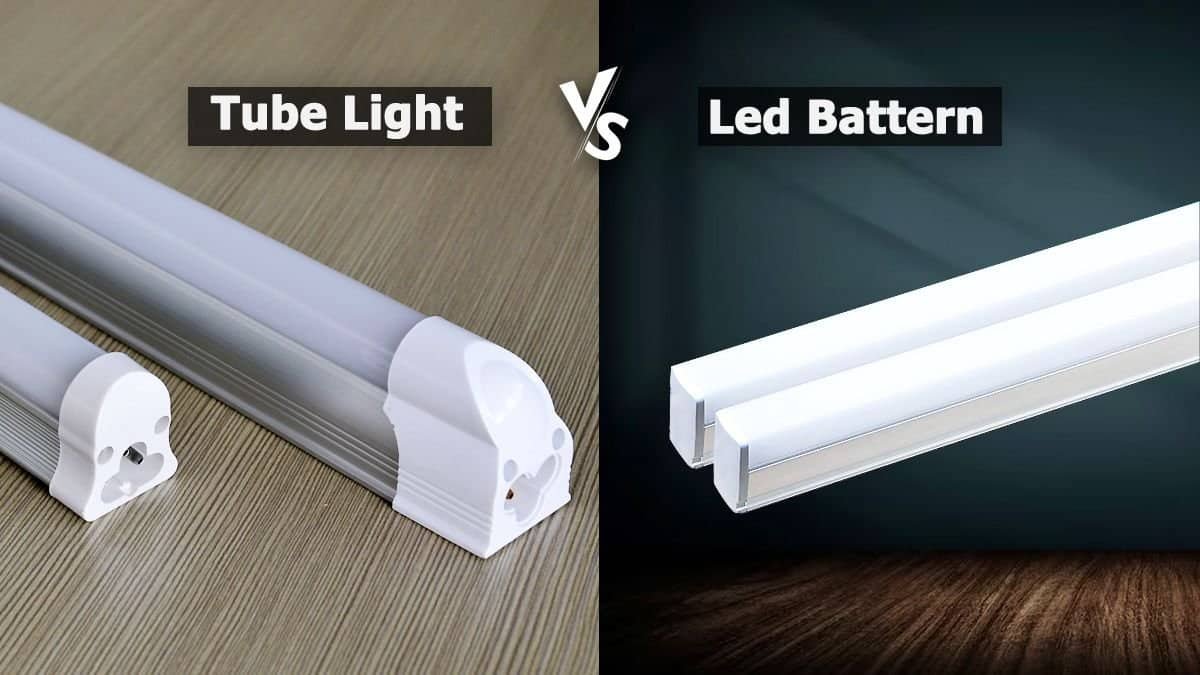There are several different refrigerant gases used in air conditioning and refrigeration systems. The two most common types are R32 and R410A. Both of these gases have other properties and characteristics. So, which one is better? We have listed the difference between R32 and R410A refrigerants.
This post will compare and contrast R32 and R410A refrigerant gases India. We will discuss the difference between R32 and R410A in terms of their physical and chemical properties, as well as their energy efficiency and environmental impact. By the end, you will know everything you need about these two types of refrigerant gas to decide which is best for your needs.
Table of Contents
What are Refrigerant Gases?

Refrigerant gases are used in various applications, from air conditioning and refrigeration to heat pumps and refrigerated transport. They work by circulating a fluid (the refrigerant) through a system of coils and pipes. As the refrigerant evaporates, it absorbs heat from its surroundings, cooling the area. When the refrigerant gets compressed, it releases the heat it has absorbed, providing warmth.
There are a variety of different refrigerant gases, each with its unique properties. The most common refrigerant gases are chlorofluorocarbons (CFCs), hydrofluorocarbons (HFCs), and hydrocarbons (HCs). CFCs were the first type of refrigerant gas to be used commercially, but they are now being phased out due to their damaging effect on the Earth’s ozone layer and negative environmental impact.
What Factors Should you Consider When Deciding Which Refrigerant Gas to Use?
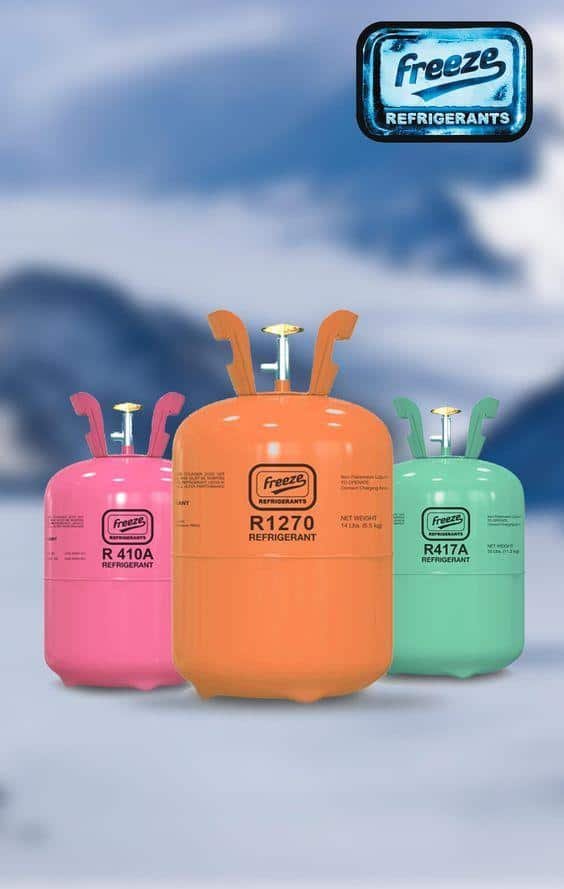
There are many factors to consider when deciding which refrigerant gas to use for your application. Below are six important factors to remember when deciding:
1. The Global Warming Potential (GWP) of the Refrigerant

The refrigerant is a key component of any air conditioning or refrigeration system. It is responsible for transferring heat from one area to another and creating the cold temperatures we need.
There are many different types of refrigerants India, each with its unique properties. One of the most important properties of a refrigerant is its global warming potential (GWP). The GWP measures how much a given refrigerant will contribute to climate change.
While the GWP is important, it is just one of many factors that must be considered when choosing a refrigerant. Other important factors include the safety of the refrigerant and its impact on the environment.
2. The Ozone Depletion Potential (ODP) of the Refrigerant

A refrigerant’s ozone depletion potential (ODP) is a measure of its ability to deplete the ozone layer. The higher the ODP, the greater the potential for the refrigerant to damage the ozone layer.
The ODP of a refrigerant is calculated by measuring the amount of time it takes for the refrigerant to break down ozone molecules in the atmosphere. The longer it takes for the refrigerant to break down ozone, the higher its ODP.
Refrigerants with a high ODP can harm the environment and should be avoided. If you must use a refrigerant with a high ODP, take precautions to prevent it from damaging the ozone layer.
3. The Flammability of the Refrigerant

The refrigerant gases used in air conditioners, refrigerators, and freezers are flammable. In some cases, these gases can be explosive. That is why it is important to know the flammability of the refrigerant gas you are using.
There are three main refrigerant gases: chlorofluorocarbon (CFC), hydrochlorofluorocarbon (HCFC), and hydrofluorocarbon (HFC). CFCs are not flammable, but HCFCs and HFCs are.
When choosing a refrigerant gas in India, it is important to consider the flammability of the gas. If you are using a flammable gas, you must take extra precautions to prevent fires.
4. The Toxicity of the Refrigerant

Nowadays, it is more important than ever to be aware of the potential hazards of common household items. This is especially true for refrigerant gases used in many appliances and can be extremely harmful if inhaled.
The chemicals used as refrigerants are extremely toxic and can have a devastating impact on the environment. Several different chemicals are used as refrigerants, but the most common are chlorofluorocarbons (CFCs), hydrochlorofluorocarbons (HCFCs), and hydrofluorocarbons (HFCs).
All of these chemicals are incredibly harmful to the environment, and they are also known to contribute to the depletion of the ozone layer. As a result, we must understand these chemicals’ toxicity so we can take steps to protect the environment.
5. The Pressure Ratings of The Refrigerant
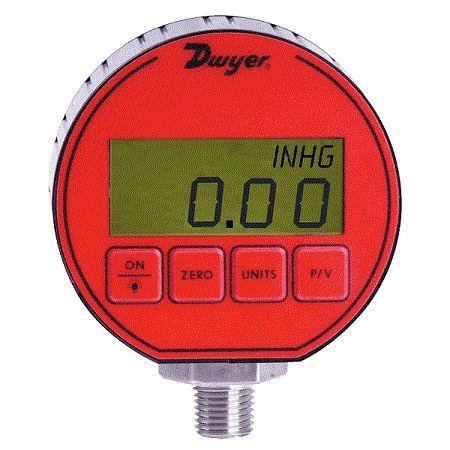
When selecting a refrigerant gas, it is important to consider its maximum operating pressure (MOP). The MOP is the maximum pressure the refrigerant can withstand without leaking or damage.
If the MOP of the refrigerant gas is too low, the gas can leak or be damaged when used in high-pressure applications. This can lead to costly repairs or replacements and can even be dangerous. On the other hand, if the MOP of the refrigerant gas is too high, the gas will not be able to effectively cool the application, which can lead to the inefficient operation or even failure.
6. The Compatibility of the Refrigerant With your Equipment

While choosing refrigerant gases is of utmost importance. Various refrigerant gases are available on the market, and each has other chemical properties. These chemical properties can interact with the materials in your equipment; over time, this interaction can cause degradation and damage. As such, you must select a refrigerant gas that is compatible with the materials in your equipment.
To ensure compatibility, you should consult with a refrigerant expert. They will be able to help you identify the best refrigerant gas for your equipment and needs. Incompatible refrigerant gases can cause several problems, so it is best to avoid them altogether. With the help of a refrigerant expert, you can be sure that you’re using the best gas for your equipment.
What is R32?
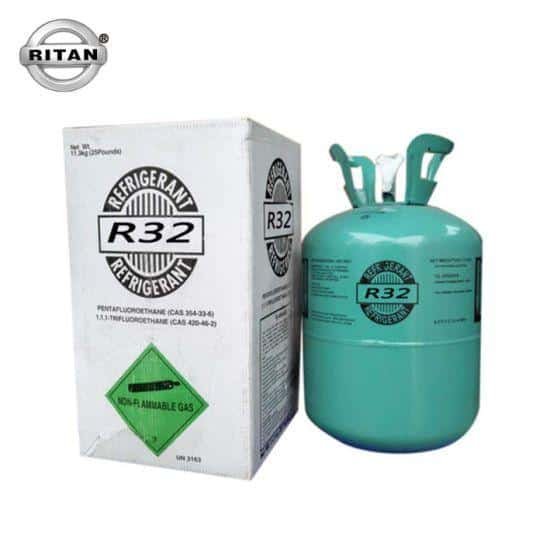
R32 is a type of refrigerant that is commonly used in air conditioners India. This refrigerant is known for its high efficiency and low environmental impact. R32 is classified as a hydrofluorocarbon (HFC), which means it does not contain chlorine or bromine. This makes R32 a more environmentally friendly option than other types of refrigerants.
R32 is also a very efficient refrigerant. It has a lower global warming potential (GWP) than other HFCs and is more energy efficient. This means that air conditioners that use R32 can help to save energy and reduce greenhouse gas emissions.
If you are looking for an air conditioner that is both efficient and environmentally friendly, then an R32 air conditioner is a good option to consider.
What is R410a?
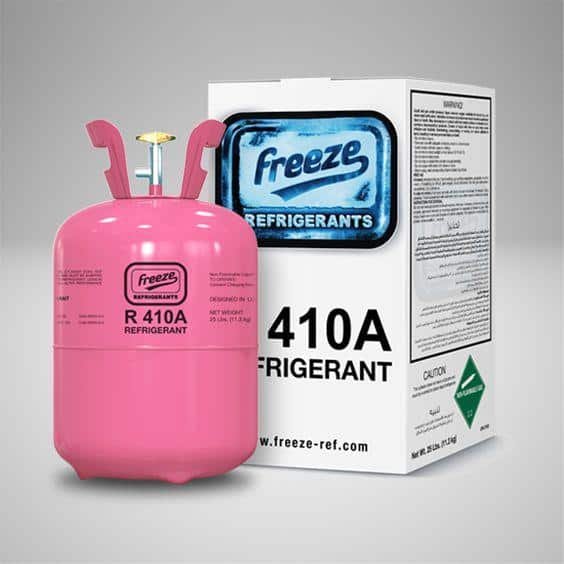
R410a is a type of refrigerant gas that is used in many air conditioning and refrigeration systems India. It is a hydrofluorocarbon (HFC) gas that does not contribute to the depletion of the ozone layer. R410a was developed as a replacement for R-22, which is being phased out due to its damaging effects on the environment.
R410a has several benefits over other types of refrigerant gases. It has a higher cooling capacity and is more energy efficient. Additionally, R410a does not cause as much damage to the environment as other refrigerant gases.
If you are looking for a safe and effective refrigerant gas for your air conditioning or refrigeration system, R410a is a great option.
The Chemistry of Refrigerant Gases: R32 & R410a
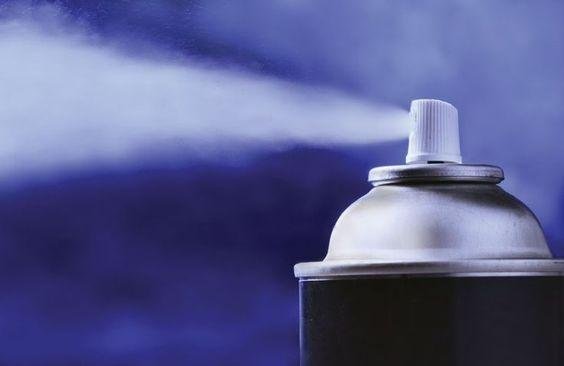
Refrigerant gases are used in various applications, from air conditioning to refrigeration in India. These gases can absorb and store heat, making them ideal for keeping things cool. But how do these gases work?
Refrigerant gases are made up of molecules capable of absorbing and releasing heat. When refrigerant gases absorb heat, they become less dense and rise. This causes the refrigerant gas to expand and take up more space. As the refrigerant gas expands, it cools down and absorbs more heat.
The chemistry of refrigerant gases is complex, but understanding how they work can help you appreciate the role these gases play in our everyday lives.
- R32
R32 is a very stable refrigerant gas. It does not react with other chemicals or substances, making it a safe choice for use in various settings. R32 is also a very efficient refrigerant gas. It has a very high cooling capacity, making it a great choice for large cooling and refrigeration applications.
R32 refrigerant gas is a hydrofluorocarbon (HFC) with zero ozone depletion potential and very low global warming potential. It is a good replacement for R134a in a variety of applications.
R32 is a non-flammable, low-toxicity gas well suited for refrigeration and air conditioning systems. It has excellent thermodynamic properties, making it an efficient refrigerant.
- R410a
Refrigerant gas, or R410a, is a commonly used chemical in air conditioners. It’s a hydrofluorocarbon (HFC) that doesn’t contribute to the depletion of the ozone layer. It’s also a very efficient refrigerant, which is why it’s often used in energy-saving air conditioners.
R410a is a mixture of two gases: difluoromethane (CH2F2) and pentafluoroethane (C2HF5). This mixture has a very low global warming potential (GWP), which means it doesn’t contribute much to climate change. It’s also non-toxic and non-flammable, which makes it safe to use in air conditioners.
What is the Difference Between R32 and R410A Refrigerant Gases?
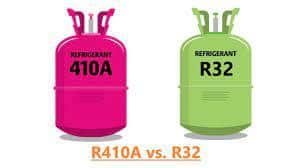
Regarding HVAC or air conditioner, two common refrigerant gases are often referred to by their brand name, R32 and R410a. R32 is the most common refrigerant gas in the world, while R410a is not too far behind. Here are the five main differences between R32 and R410A refrigerant gases:
1. Boiling Point
R32 has a boiling point of -51 degrees Celsius, while R410a has a boiling point of -48.5 degrees Celsius. This means that R32 is less likely to cause condensation on surfaces, while R410a is more likely to cause condensation.
2. Global Warming Potential (GWP)
R32 and R410a refrigerant gases have different global warming potentials (GWPs). R32 has a GWP of 650 – 675, while R410a has a GWP of 2,000 – 2088. This means that R32 is less harmful to the environment than R410a. However, both refrigerant gases are greenhouse gases and contribute to climate change.
3. Availability
R32 is a newer refrigerant gas that is becoming more popular as it is more efficient and has a lower global warming potential than R410a. R410a is still used in many air conditioners, but it is being phased out in favour of R32. However, R32 can be more expensive than R410a and is not as widely available.
4. Operating Pressure
R32 has a lower operating pressure than R410a, making it easier to work with. R410a, on the other hand, has a higher operating pressure, making it more difficult to work with. And since R32 has a lower operating pressure than R410a, it is more efficient and can cool your home more effectively.
5. Efficiency
While R32 and R410a are refrigerant gases, they each have different properties that make them more or less efficient. R32 has a lower global warming potential (GWP) than R410a, meaning it causes less damage to the atmosphere. However, R410a has a higher energy efficiency rating (EER), meaning it uses less energy to cool a space.
6. Molecular Size
R32 and R410a refrigerant gases differ in their molecular size. R32 has a smaller molecular size than R410a. This means that R32 is less likely to cause damage to the atmosphere when it is released into the atmosphere. R32 is also a more efficient refrigerant gas, which can cool down a room more quickly than R410a.
7. Environment-Friendly
R32 refrigerant gas is an environmentally friendly new generation refrigerant gas with a low global warming potential. R410a refrigerant gas is an older generation refrigerant gas that is not as environmentally friendly and has a high global warming potential.
8. Compatibility
Another key difference between R32 and R410a is compatibility. R32 can be used with existing R410a equipment, but R410a cannot be used with existing R32 equipment. This is because R32 and R410a use different refrigerant oils. As a result, you’ll need to use various equipment if you want to switch from R410a to R32.
To Wrap It Up

In conclusion, R32 and R410a are both efficient refrigerant gases, but R32 has a lower global warming potential than R410a. R32 is also more energy efficient than R410a, making it the better choice for air conditioners. If you have any questions or comments, please leave us a comment.
FAQS
What are R32 and R410A?
R32 is a type of refrigerant that is commonly used in air conditioners. It is also known as difluoromethane. R410A is another type of refrigerant that is widely used in air conditioners. It is also known as pentafluoroethane.
What is the difference between R32 and R410A?
R32 has a lower global warming potential than R410A. It also has a lower ozone depletion potential. R32 is also a more energy-efficient refrigerant. R410A has a higher cooling capacity than R32. It is also a more stable refrigerant. We have listed more differences in the post above.
Which is better, R32 or R410A?
There is no easy answer when choosing between R32 and R410A. Both refrigerants have their advantages and disadvantages. If you are concerned about the environment, R32 is the better choice. If you are worried about cost, R32 is usually cheaper than R410A. However, it is always important to check prices before making a purchase.
Which refrigerant is more energy efficient?
R32 is more energy efficient than R410A because it has a lower global warming potential (GWP). GWP measures a refrigerant’s ability to trap heat in the atmosphere, and R32 has a GWP of 677.
R410A, on the other hand, has a GWP of 2000. This means that it’s not as good at trapping heat, so it’s not as energy efficient.
Which refrigerant cools better at higher temperatures?
Two of the most common refrigerants used in air conditioners are R32 and R410A. These refrigerants have excellent cooling properties, but R32 is generally more efficient at high temperatures. This means that it can cool air more effectively in hot climates.
R410A is also a very effective refrigerant but is not as efficient as R32 at high temperatures. This means it is not the best choice for air conditioners in hot climates. However, it is still a good option for use in air conditioners in moderate temperatures.
Which refrigerant is less expensive in India?
There are a few factors to consider when deciding which refrigerant is less expensive. The first is the initial cost of the refrigerant. R32 is typically cheaper than R410a. However, this is not always the case, so it is important to check prices before purchasing.
The second factor to consider is the cost of shipping and handling. R32 is a heavier refrigerant, so it may cost more to ship and handle. The third factor to consider is the size of the refrigerant container. R32 is a smaller refrigerant so the containers may be less expensive.




